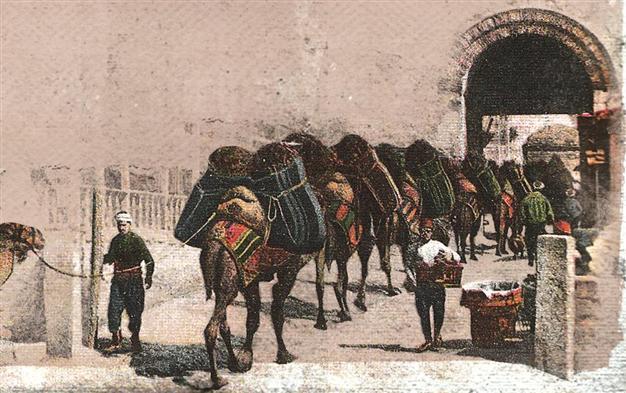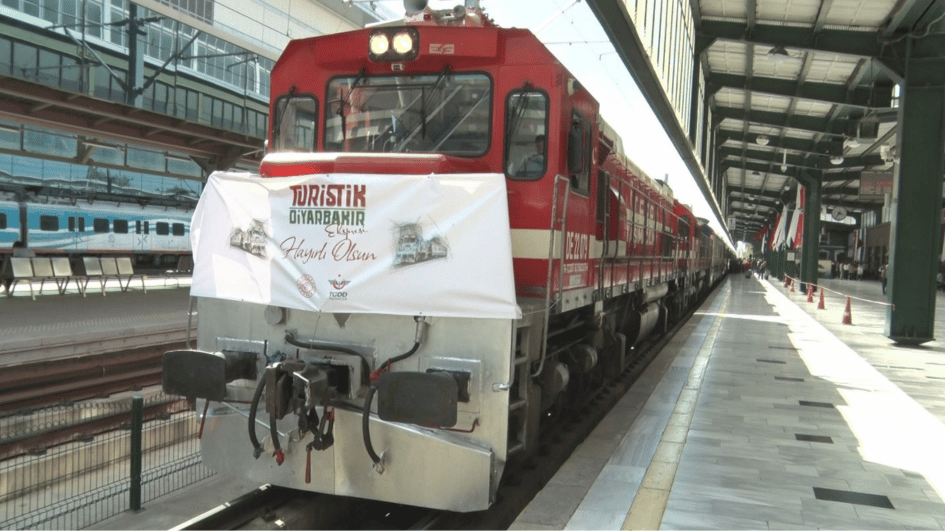The gates of Istanbul
Niki Gamm Hürriyet Daily News

Edirne Gate in the city walls.
A gate at its simplest is an opening in some sort of an enclosure – a wall or a fence. It can be very plain or very ornamental such as the earliest known ceremonial Gate of Ishtar, an elegant structure created by Babylonian King Nebuchadnezzar II in 575 BC. Certainly all fortresses and fortified cities had gates that could be opened or closed as circumstances warranted. The bigger the settlement, the more important it became to have larger walls and more gates. Such building required a central authority able to command the manpower needed to build such constructions and a reason to create such protection. Palisades or stake walls such as the ancient Greeks and Romans constructed might have been useful for short term defense against small forces but would hardly helped against a large enemy force.Walls were built to protect community
By the time the first walls were built in Byzantium there was every reason to make them strong to protect a thriving community that had grown rich on trade between the Black Sea and the Aegean. It was the beginning of the Christian era, and the walls were intended to protect the buildings on what is usually termed the Acropolis, that is, where Topkapı Palace is today. They are believed to have been six kilometers long with 27 towers; however, we have no way of knowing how many gates were in the walls. Some of them would have led down to the Sea of Marmara, some along the land side and some on the Golden Horn side. Maybe nine?

The map of Constantinople in 1422 by the
Florentine cartographer Cristoforo Buondelmonte.
The Golden Gate consisted of three arches, a large one in the middle flanked by two smaller ones. Gold-plated gates controlled traffic in and out of the city while the facades of the arch had sculptures and two plaques on either side. The plaque, translated from Greek, read:
“Theodosius adorned these places after the downfall of the tyrant. He brought a golden age who built the gate from gold.”
The most important of the sculptures depicted an emperor riding in a chariot pulled by four elephants, but which emperor it was is debatable. One suggestion is that it shows Theodosius after he conquered Maximus. Another suggestion is that it represented Heraclius after his victory over the Sassanians and his recovery of the True Cross in the seventh century. What happened to the sculpture is unknown but some pieces of the sculpture on the façade are now at the Istanbul Archaeological Museums. The last time the arch was used for a triumph was in 1261 when the Byzantines retook the city from the Latin Crusaders. After that it was blocked up so no one could enter or leave the city from there.
Of the other eight main gates in the Theodosian Walls that we now recognize by their Turkish names, Topkapı and Edirnekapı were the two gates that were significant in the 1453 conquest of the city and afterwards. It was opposite Topkapı Gate that Sultan Mehmed II had his tent during the siege of the city and where the largest of his cannon was placed. According to legend it was here that the last Byzantine emperor was killed. Edirnekapı has been identified by Alexander van Milligen in his 1899 book, “Byzantine Constantinople: The Walls of the City and Adjoining Historical Sites” as the gate through which the sultan entered the city after it fell, although this has been disputed since the earliest sources do not tell us which gate was used. Today’s scholars favor Topkapı or Eğrikapı.
The Theodosian Walls connect with other Byzantine walls that run down to the Golden Horn. Eğrikapı is found there in a wall built in the twelfth century by the Emperor Manuel Comnenes. East along the Golden Horn ran the city’s sea walls. It’s still possible to see some of them still standing and even an arched structure that stood as a gate. The sea walls were less well built than those of Theodosius because the Byzantines didn’t really believe that they could be attacked from that side. They felt that the chain they had placed across the entrance to the Golden Horn in the eighth century and the strong currents in the Sea of Marmara would preclude any enemy maritime attack from that side. There must have been nearly 20 gates in the sea walls with the last one in today’s Sirkeci district being the one where the great chain was kept.

The Ishtar Gate in Babylonia
The walls on the Sea of Marmara side had 13 gates. As the wall was built quite near the sea, it was relatively safe from any enemy attempting to attack from that side. The first gate in particular, the Eastern Gate, served as a ceremonial gate in the twelfth century. It has since disappeared since the marble in the two towers flanking it proved irresistible and Sultan Mahmud II used it to build the nearby Marble Köşk. Other gates led to buildings in the grounds of Topkapı Palace or served as the entry and exit points for the harbors along the Marmara. The final gates in the walls are the Samatya Gate and the Narlı Gate.
Istanbul’s other gates
Galata, just across the Golden Horn, was also surrounded by fortification walls. According to Nezih Başgelen’s recent publication, “Galata-Pera”, twelve walls had gates; however, it is impossible to judge that from the illustrations in the booklet. Today only Galata Tower remains and the gate known as Azapkapı.
The other fortifications with gates include Rumeli Hisar, Anadolu Hisar and the Genoese castle at Anadolu Kavağı.
Topkapı Palace is in a league of its own with its Imperial Gate and Gate of Felicity.
Today’s monumental gates are of quite a different type as one can easily see from the iron gate at Dolmabahçe Palace and some of the smaller palaces / mansions such as Ihlamur Kasrı.
















